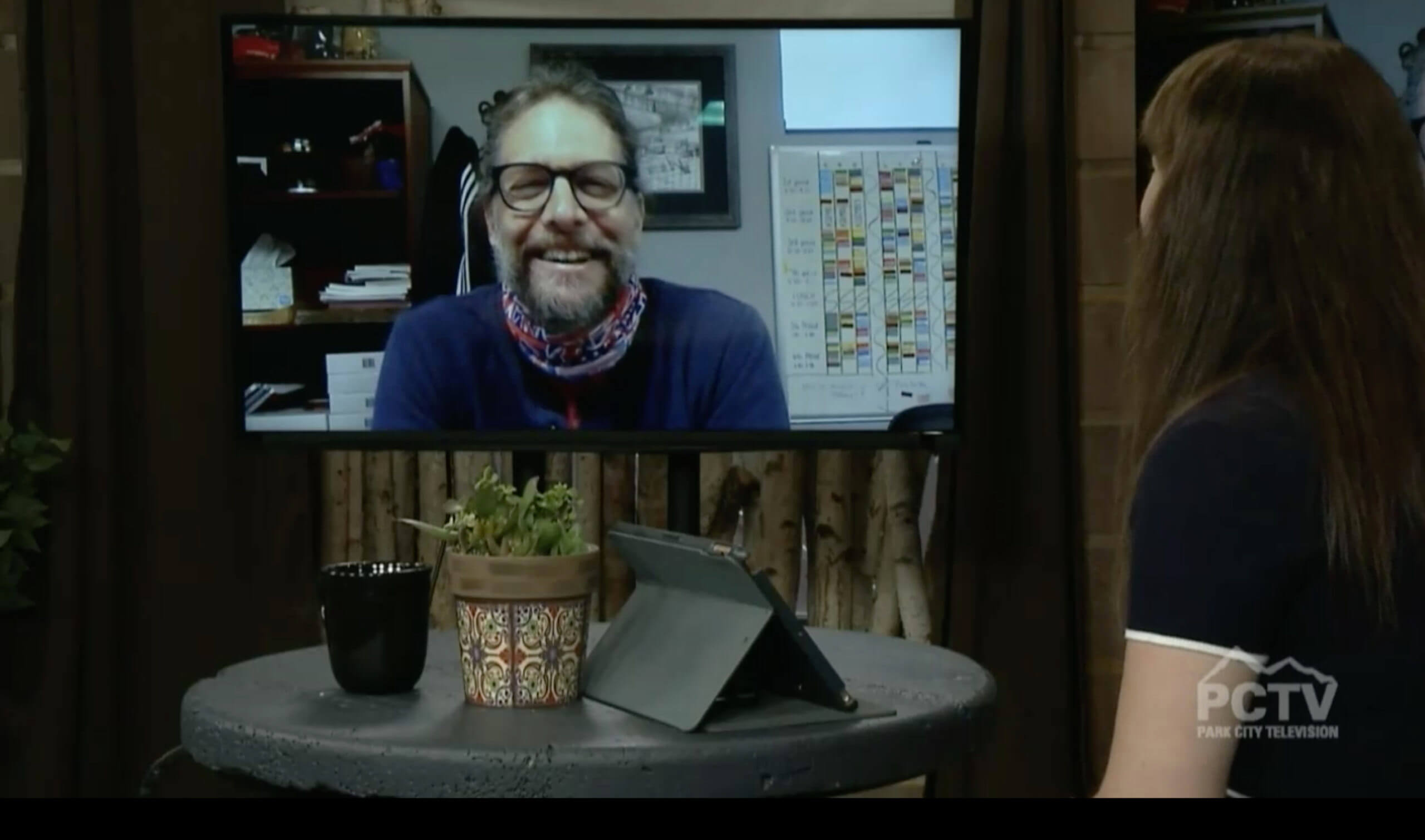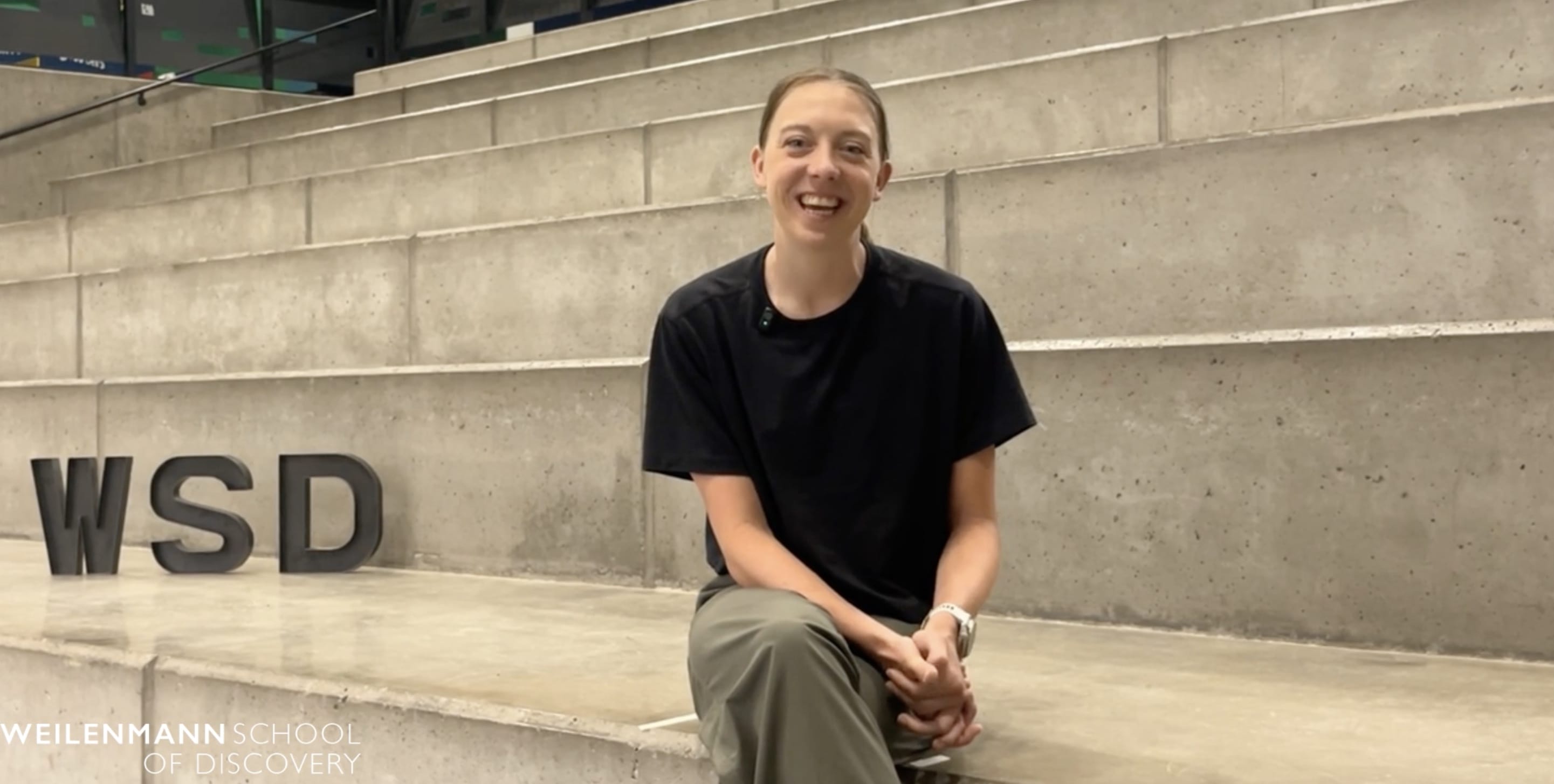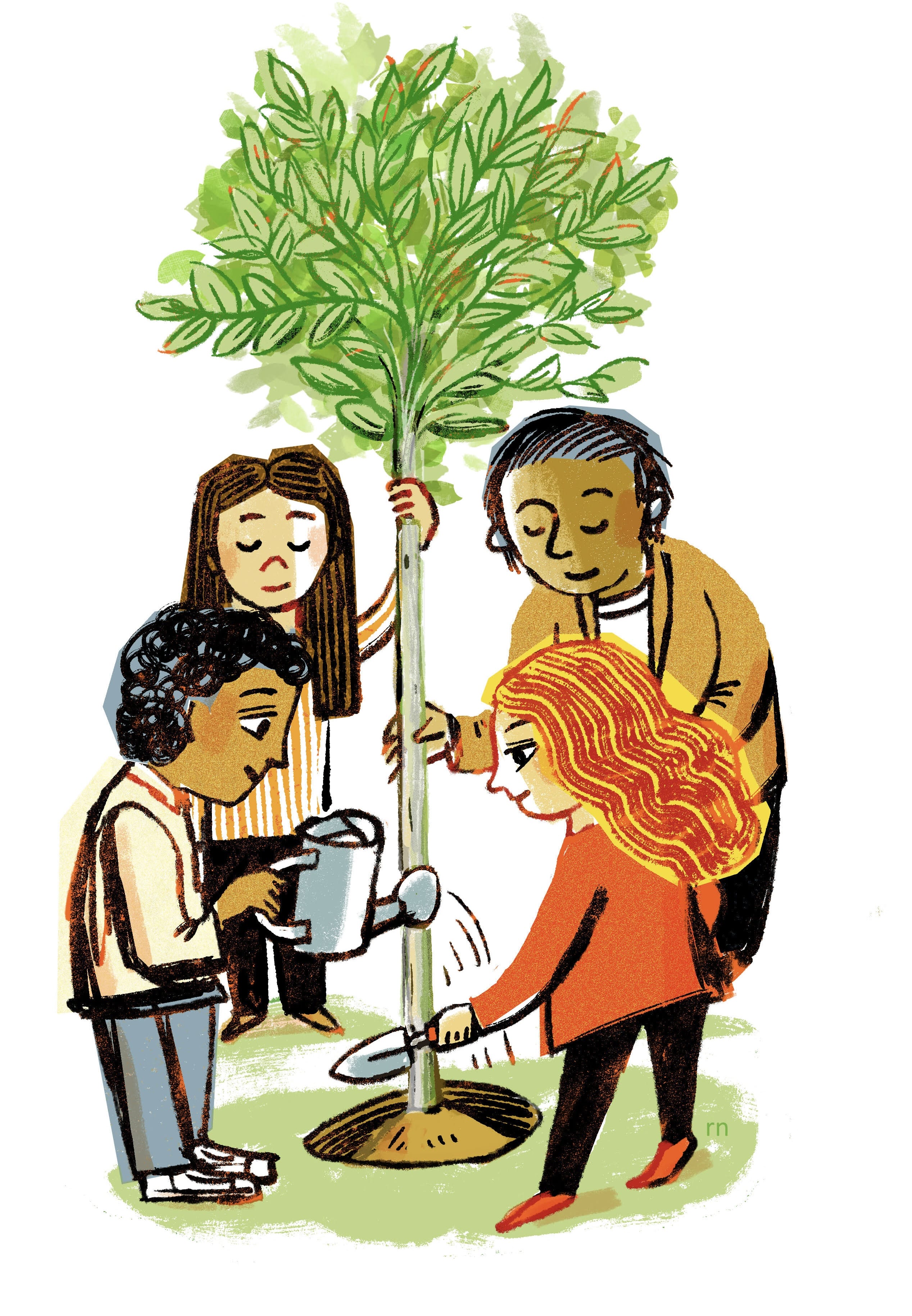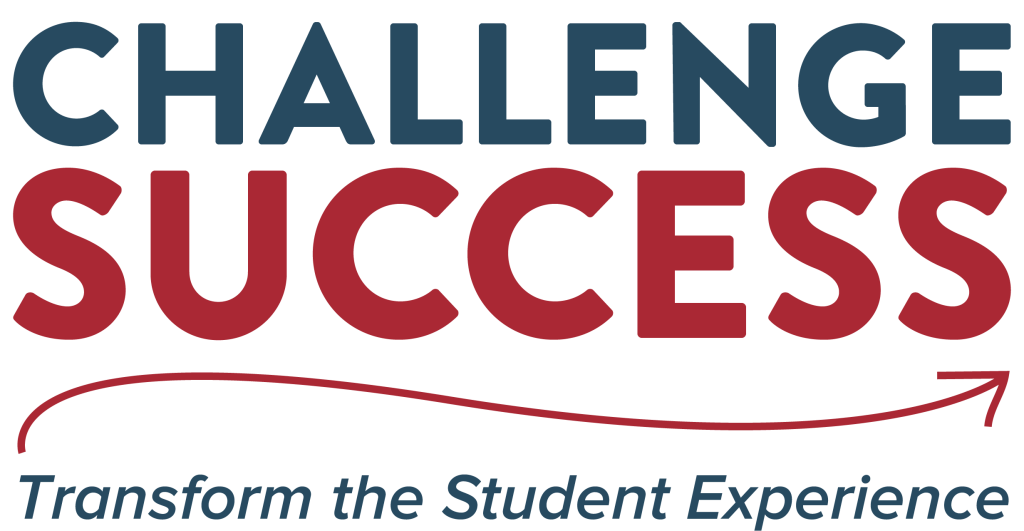Two-time Olympian and silver medal winner Haley Batten discusses the impact Weilenmann School of Discovery…

On July 29, Christine Napier of Park City TV interviewed WSD’s Executive Director, Steve Williams, about his new role and the school’s plan for welcoming students back to school.
CHRISTINE NAPIER: ON this Parenting and Education Day, we are checking in on a local private school. Weilenmann School of Discovery’s Executive Director, Steve Williams is joining us. Steve, thanks for being with us.
STEVE WILLIAMS: Hi Christine, thank you! If I could just make one point, we are a public charter school, we are not a private school. Some people have made that error and I want to make sure to everyone that … we are a public charter school.
CHRISTINE NAPIER: Thank you for clearing that up, I actually didn’t understand that so thank you for explaining that to me. So that being said, tell me a little bit more about Weilenmann School of Discovery and how it is different from your traditional public school.
STEVE WILLIAMS: Let’s see, we have been here for ten years, we’re at the top of Parley’s Canyon and, as I said, we are a public charter school, so we are funded by the state of Utah. We have a charter that focuses on a few things — one of our big components is outdoor education. We get all of our students K – 8 outside almost every day, often for several hours. We are also a Liberal Arts school, so we emphasize the core subjects — math, reading, critical thinking, writing, science, history, Latin … and we have a really vibrant music and arts program as well. We try to do everything with our students. We love it here in Park City and have really enjoyed our relationship with the community here.
CHRISTINE NAPIER: And in fact, Steve, you just started as Executive Director in July. Tell me a little bit more about your background.
STEVE WILLIAMS: I began life as a teacher back in the 90’s. I’ve been an English teacher my entire career. I’ve also taught some history and a few other subjects, but English is my primary love. I taught in private schools down in Salt Lake at the beginning of my career in Middle and High School, I was also a Middle School Dean. And then [I] went to Atlanta and taught there for 3 years in the high school … then came back to Utah. [I] … was here for a year and during that year Weilenmann was sort of in the ground, being built, and a group of old colleagues that I knew really well and loved were part of the founding of this school. They convinced me to join them in this new project that I knew nothing about. I didn’t know anything about charter schools and we all kind of jumped in and made a go of it. It was kind of a big risk and we’ve made it work and we’re here ten years later, and I think really successfully.
CHRISTINE NAPIER: And what a year to have as your first year as Executive Director.
STEVE WILLIAMS: My gosh! So I started interviewing — the search for a new director began last summer and I threw my hat in. There was a little hesitation, but I ended up throwing my hat in the application pool and went through the interview process. It was late January or early February when I accepted the position, the Board extended to me the offer, and of course none of this was really on the radar, it was just then sort of breaking around the world that COVID was coming. Then in March we went into quarantine and I knew then that things were going to be a little weird. But I kind of thought, naively, that by August we’d be back to normal and of course we’re not. We’ve spent the summer planning and meeting with people, talking with faculty talking with parents, with my admin team, getting ready for this opening. We’re very excited about it, but as you know there’s just a lot of questions, things change every day, and we’re doing our best to be ready and flexible for those changes, whatever they are.
CHRISTINE NAPIER: I think you are definitely not alone in those of us thinking that by August things would be back to at least a version of normal, but that is not the case. So tell me a little bit more about Weilenmann’s plan for reopening.
STEVE WILLIAMS: So, yeah, thank you I’d like to talk about that because I know there are a lot of questions about our opening and others around the state. We’re trying to be flexible — our underlying principle here is being flexible for our parents, and also being safe for our students and our teachers coming into the building. So we’ve offered a 3-pronged [plan]:
Option one is that [students] can come into the building and be here in person attending classes. We’ll call that the normal scenario, although that will be with masks on and with as much distancing as we can provide in a school setting, and with some kind of beefed up cleaning protocols. Second option would be joining virtually when you’re not feeling well or when you are in a position that coming to the school is not the best choice given your own personal health or that of a family member or something like that. We have the option for kids to join 1, 2, 3, 4, or 5 days a week virtually, joining classes that are live in real time. We feel like that is a good option for parents who just may not feel comfortable sending their kids, and I think it also encourages parents whose child may not be feeling well to keep them at home knowing they won’t fall behind, they’ll be able to join classes virtually. And then the third scenario would be just a full-time online situation, which would include anyone that won’t come into the building at all or that situation like we had in the spring where the county or the State comes in and says, hey we’re going to go into some kind of quarantine again and we’re going to close the schools. In that case we would go to a full online offering like we did in the spring.
CHRISTINE NAPIER: So it sounds like, correct me if I’m wrong, but it appears that students and families have a flexibility in being able to go back and forth throughout this beginning of the school year to see what works best, is that true?
STEVE WILLIAMS: That is absolutely true, thank you. We felt like we needed to offer that flexibility and we’re fortunate that we’re able to. I know that this is a difficult thing to do and every school finds itself facing maybe slightly different scenarios with what they can offer but yeah, we know that things change daily with people’s health and with people’s perceptions and feelings about safety with what’s going on, so we felt like we needed to offer that opportunity. As people go through the term they may change their mind and decide to do something different. We want to be able to allow that kind of flexibility.
Of course that requires a lot of flexibility on the part of our teachers as well, and that’s the other piece of this. Our teachers are coming into this trying to be ready for a multitude of scenarios that may come their way. We know that teaching has always been a challenging profession. It takes a special kind of person to come in and be with kids all day long, and in this setting I think it is an especially big challenge to be ready for the kinds of things that are possible this year. I thank our teachers and our parent body for their patience and flexibility and generosity as they think about the opening of this school year.
CHRISTINE NAPIER: I can’t imagine how hard it must be for teachers to try to prepare for a school year that has so many unknowns, so kudos to them for doing their absolute best and dedicating themselves to their position. I’m curious, how will the classroom environment look different than in past years?
STEVE WILLIAMS: Well, that’s a really good questi9on. I’ve been visiting classrooms over the last several days, looking in as teachers have started to return to school and get their rooms set up. We’ve asked our teachers to maximize the footprint of their classrooms and anything that they don’t need in there to get it out so that we can spread ourselves as much as possible. We’re creating some designated areas in the room where the teacher has some distance from the kids, as the teachers are in there all day long in that same room, so creating some space between them where possible.
We’re also outfitting each of our classes with a Chromebook and a bluetooth microphone so that those who are tuning in online can hear well. We know that if the technology doesn’t work well that can be really frustrating. So we want the kids to be able to hear their teacher and the teacher to be able to hear the kids.
We’ve placed hand washing and disinfecting stations around the school, just working on some protocols. Each class period as it ends will include some cleaning up, washing hands, cleaning up of materials that have been used. We know that it will eat into our teaching time a little but we feel like it is important that we maintain the best hygiene that we can in a school. Even under normal conditions schools have a lot of germs floating around — we’re hoping this year that we can even make that a little better, we’ll have better cleaning protocols.
CHRISTINE NAPIER: Steve Williams, thanks so much for joining us today to explain how Weilenmann School of Discovery will be opening up for their back to school process. We appreciate Mr. Williams taking the time to be with us. Head to the website, it is WSDPC.ORG, if you would like more information about this local public charter school.


